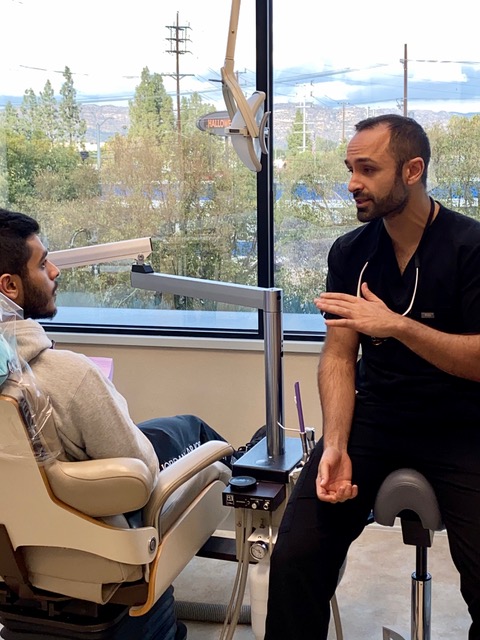Best Ways to Clean Your Teeth for a Healthier Smile
Meta Description: Discover the best ways to clean your teeth with expert oral hygiene tips from a Woodland Hills dentist. Learn proven brushing techniques, flossing benefits, mouthwash tips, and dietary advice to maintain a healthy smile.
Maintaining an impeccable smile isn’t just important for appearances—it’s a cornerstone of overall health. Whether you’re seeking advice from a trusted Woodland Hills dentist or exploring the latest in best dental care tips, understanding how to clean your teeth effectively is crucial. In this comprehensive guide, we delve into scientifically proven techniques and practical steps that you can incorporate into your daily routine.
The Importance of Excellent Oral Hygiene
Oral hygiene is the foundation for preventing dental problems like cavities, gum disease, and bad breath. Numerous studies have shown that rigorous dental care can lower the incidence of chronic diseases linked to poor oral health. Whether you live in a bustling community such as Woodland Hills or beyond, a meticulous oral hygiene routine is essential for long-term dental wellness.
1. Mastering Your Brushing Technique
Why Brushing Matters
Brushing is the first line of defense against plaque buildup, bacteria, and food debris. The American Dental Association (ADA) advises brushing your teeth twice daily using a soft-bristled toothbrush and fluoride toothpaste to maintain enamel strength and gum health.
The Science Behind Brushing
Research underscores the importance of spending a full two minutes brushing. A study conducted by dental professionals revealed that maintaining the recommended brushing duration can remove nearly 60% of plaque following meals. This process minimizes the risk of dental cavities, contributing to stronger, healthier teeth.
Data Point #1:
According to the ADA, brushing for two minutes daily helps remove plaque buildup effectively, reducing your risk of dental caries and periodontal disease.
Chart: Proper Brushing Technique
Below is a conceptual chart outlining the steps for proper brushing:
| Step | Technique Description | Benefit |
|---|---|---|
| Positioning | Hold the brush at a 45-degree angle to your gums | Ensures contact with both teeth and gums |
| Circular Motion | Use gentle, circular motions rather than harsh scrubbing | Minimizes enamel damage, maximizes cleaning |
| Coverage | Brush the outer, inner, and chewing surfaces of all teeth | Ensures no plaque is left behind |
| Duration | Brush for two minutes—use a timer if needed | Provides sufficient cleaning time |
Figure: Proper Brushing Technique Chart (Visualize each step as you read this table; this structured approach helps reinforce a routine that both amateurs and experts in best dental care appreciate.)
2. Flossing: The Unsung Hero of Oral Care
Why Flossing Is Essential
While brushing effectively cleans the surfaces of your teeth, it cannot reach the narrow spaces between them. Flossing daily is essential for dislodging food particles and plaque from these hard-to-reach areas.
Scientific Insights on Flossing
Multiple studies have demonstrated that daily flossing can reduce plaque by as much as 40%. This reduction is directly linked to decreased gum inflammation and a lower risk of periodontal disease, which has been shown to contribute to overall systemic health.
Data Point #2:
Research indicates that incorporating flossing into your routine can reduce plaque levels by 40%, significantly improving your gum health and overall oral hygiene.
Chart: Benefits of Flossing
Here’s a detailed chart summarizing the benefits of a regular flossing routine:
| Benefit | How It Works | Impact on Dental Health |
|---|---|---|
| Plaque Reduction | Removes plaque buildup between teeth where brushes can’t reach | Decreases risk of cavities |
| Gum Health | Minimizes irritation and inflammation in gum tissues | Lowers likelihood of periodontal disease |
| Prevention of Tartar | Prevents plaque from hardening into tartar | Reduces need for frequent professional cleaning |
| Enhanced Breath | Eliminates trapped food particles that cause bad breath | Provides long-lasting fresh breath |
Figure: Benefits of Flossing Chart (Keep this guide handy as a reminder of how your daily flossing can pave the way for a healthier smile.)
3. Supplement Your Routine with Mouthwash
The Role of Mouthwash in Oral Hygiene
Mouthwash is more than a breath freshener. An antibacterial mouthwash helps eliminate bacteria that escape the bristles of your toothbrush and the fibers of your floss. When paired with fluoride, mouthwash reinforces enamel and fights the early stages of tooth decay.
Choosing the Right Mouthwash
Look for products that carry the ADA Seal of Acceptance and contain ingredients such as cetylpyridinium chloride or chlorhexidine. These compounds have been clinically shown to reduce bacterial load and maintain oral health.
4. Don’t Forget Your Tongue
The Overlooked Surface
Your tongue can harbor bacteria and food particles that contribute to bad breath and dental plaque. Using a tongue scraper or brushing your tongue gently with your toothbrush can dramatically improve your overall mouth cleanliness.
Scientific Perspective
Research has revealed that neglecting tongue cleaning can account for up to 50% of the bacteria in your mouth. A simple tongue cleaning step can therefore be a game-changer in your pursuit of optimal oral hygiene.
5. Diet and Its Impact on Dental Health
Eating Right for a Brighter Smile
What you eat has a direct influence on your dental health. Crunchy fruits and vegetables, such as apples and carrots, can help clean your teeth naturally. Dairy products provide calcium, which is essential for maintaining strong enamel.
Foods to Limit
Sugary and acidic foods can erode enamel and lead to tooth decay. Try to minimize your consumption of sodas, candies, and citrus fruits. Instead, opt for water to help wash away food residues and support saliva production—an essential component of natural oral defense.
6. The Benefits of Regular Dental Visits
Professional Cleanings
Even the most dedicated home-care routine benefits from professional cleanings. A visit to your Woodland Hills dentist for a biannual cleaning helps remove hardened plaque (tartar) that cannot be eliminated with regular brushing and flossing.
Preventive Care
Early detection of dental issues can save you from costly and painful treatments later on. Regular check-ups allow your dentist to monitor your oral health and provide tailored advice to keep your smile shining.
7. Enhance Your Routine with Modern Technology
Electric Toothbrushes
Electric toothbrushes have become a staple in many households because they offer enhanced plaque removal compared to manual brushes. Their built-in timers and pressure sensors ensure that each brushing session is both uniform and effective.
Dental Sealants
For individuals prone to cavities, especially children and teenagers, dental sealants provide an additional layer of protection on the chewing surfaces of the molars. Sealants can last for several years, reducing the likelihood of decay without requiring daily attention.
8. Stay Hydrated for Optimal Oral Health
The Power of Water
Water naturally cleanses your mouth by flushing away food particles and bacteria. It also prevents dry mouth, a condition that can increase the risk of tooth decay and gum disease. Drinking ample water throughout the day is a simple yet effective way to maintain oral hygiene.
Making Oral Hygiene Part of Your Lifestyle in Woodland Hills
Living in Woodland Hills means you have access to some of the best dental care providers who emphasize a holistic approach to oral health. Integrating the tips above into your daily routine can yield significant long-term benefits, from reducing the risk of periodontal diseases to preserving the natural brightness of your smile.
Local Expertise and Personalized Care
Consulting with a professional in Woodland Hills ensures that you receive personalized advice tailored to your dental needs. Whether you need advanced cleaning services or a complete overhaul of your at-home routine, a trusted Woodland Hills dentist can guide you every step of the way.
Final Thoughts: Your Path to a Brighter, Healthier Smile
Implementing a comprehensive oral hygiene routine can be transformative. By following these scientifically backed tips—from using proper brushing techniques and flossing to embracing technology with electric toothbrushes and sealants—you are setting the stage for long-term dental health. A commitment to these practices ensures that your smile remains vibrant and healthy, regardless of where you live.
Remember, your smile is your gateway to a healthier life. With a few simple, effective changes, you can reduce the risk of dental problems and enjoy the lasting benefits of excellent oral hygiene. For residents in and around Woodland Hills, professional advice is just a visit away. Whether you’re scheduling a routine cleaning or seeking specialized treatment, expert dental care is within reach.
For more information on how to maintain optimal oral health, explore additional resources on dental care and hygiene. Trust your local Woodland Hills dentist to guide you on every step of your journey to a healthier, more dazzling smile.
For expert dental care and exceptional service in Woodland Hills, visit and embrace the art of a healthy smile today.
This comprehensive guide not only provides in-depth insights into everyday dental care but also reinforces actionable strategies supported by science and expert advice. Keep these tips in mind, and you’ll be well on your way to enjoying the benefits of long-term oral health.


